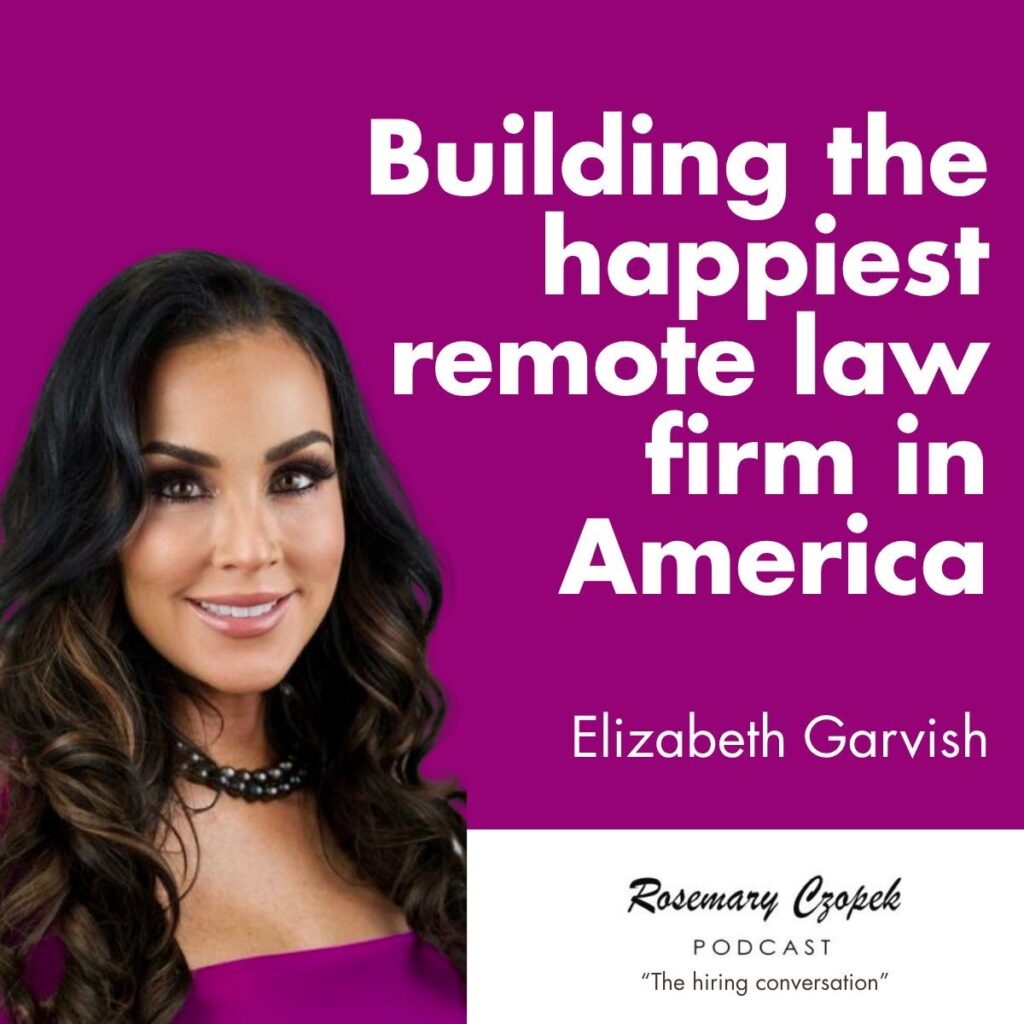I just recorded a podcast with Elizabeth Garvish, founder of Garvish Immigration Law Group, LLC.
Her story reminded me how much leadership is about trusting people we can’t always see and choosing what Elizabeth calls “love.” In practice, that means leading with empathy, trust, and courage, even when leading from afar.
Elizabeth runs a fully distributed team with lawyers and staff across the United States, Spain, Argentina, Colombia, and Honduras.
Her goal is simple yet powerful: to build the happiest law firm in America.
My top three takeaways:
1️⃣ Love as a leadership system
Elizabeth doesn’t lead with rules; she leads with trust. Her team works globally, across time zones and cultures, connected not by oversight but by shared values.
2️⃣ Flexibility as a gift, especially for working mothers
Her firm is built around women, many of them mothers, who can choose how and where they work. She proved that flexibility doesn’t have to reduce performance.
3️⃣ Structure makes freedom possible
Behind the idea of “love” is solid structure: EOS meetings, SOPs in Trainual, and remote systems that make clarity the default. It’s a vivid reminder that this is how culture scales beyond the office.
For me, this conversation reinforced that remote leadership requires a different set of skills, approaches, and practices—and that it absolutely works. When trust, support, and clarity are part of the system, teams don’t just function remotely; they thrive.
Grateful to Elizabeth for sharing her vision of what leading with love looks like in the real world.
Full episode coming soon. 💫

You Might also like
-
The Real Cost of Hiring Cheap
“If you think it’s expensive to hire a professional to do the job, wait until you hire an amateur.”
—Red Adair
Every time I see this quote, I’m reminded of how true it is in hiring. The cheapest option almost always turns out to be the most expensive.
Expertise saves you money, time, and headaches, always. The hard lesson is this: what looks like a good deal usually isn’t.
Quality has its price.
 Post Views: 134
Post Views: 134 -
The Art (and Science) of Hiring in 2025
Over the past 24 years, I’ve read thousands of resumes, interviewed hundreds of people, and hired across multiple companies. I thought I had a ton of experience — until I met Cecilia and Victoria. I’m in awe.
Why? Because Cecilia and Victoria are true experts at sourcing new team members. The other day, I did a quick calculation: between them, it’s easily over 40,000 interviews throughout their careers. That’s an incredible amount of experience.
And I’m not saying this because they are part of my team, but because I’ve seen firsthand how much hiring has changed over the past 24 months — more than it did in the previous 24 years. Hiring hasn’t gotten easier. Quite the opposite.
I think this is one of the biggest challenges small companies face today: finding the right people in a sea of opportunities. Getting hiring right determines the success of any business. Get it right, and the business grows. Get it wrong, and it stagnates.
Here are three timeless techniques Cecilia and Victoria use when interviewing candidates after scanning thousands of applications:
1. Details that hurt
Anyone can talk about wins. The real test is whether they can tell the story behind them in vivid detail — what really happened, who was involved, and what the friction was. They even ask small things like what the weather was like during a specific event to test authenticity.2. Process over polish
They ask candidates to walk through how they did something, step by step. Real experience is a little messy. Made-up experience sounds like bullet points. They look for the small missteps and corrections that prove genuine experience.3. The pause
Real memory makes people stop and think. Over-rehearsed answers don’t. When on a video interview, do the eyes move slightly as they recall, or do they stay fixed? That’s a subtle but powerful signal.These are fundamentals in a hiring process that has only gotten more complex in recent months. But they remain the foundation — even in a world of a thousand resumes and AI-polished applications.
 Post Views: 36
Post Views: 36 -
You Can’t Build Loyalty With a Tight Fist
Raising Salaries Won’t Fix Your Turnover Problem
I’ve seen companies with sky-high churn, and others paying exactly the same where employees stick around for years.
Both assume that’s just how it is. The struggling ones blame it on the salary, saying they can’t pay enough.
Here’s what I believe: turnover is rarely about the paycheck. It’s almost always about purpose.
When we get a new inquiry and see people leaving in waves, that’s not a pay problem. That’s a culture problem hiding in plain sight.
Often these companies pay well, yet people still leave. Meanwhile, the businesses with the lowest churn have something different in common: their people know why they’re there, because they feel part of something that matters.
I don’t believe people leave companies. They leave bosses and organizations that fail to give their work meaning.
If you want people to stay, you don’t need free kombucha or another salary bump. You need to lead with purpose. And sometimes, the smallest gestures mean the most:
• A thank you when it counts
• A birthday remembered
• A dinner where work doesn’t come upBefore you raise another salary, ask yourself: does each and every team member know why they’re here?
 Post Views: 58
Post Views: 58


